Anti-Tracking Shoes
There are ways to stay hidden while traveling by foot, and one that you will not often hear about is using anti-tracking shoes.
What are Antitracking Shoes?
Among the countless anti-tracking methods, the handmade manufacture of anti-tracking shoes has always been a unique approach. Anti-tracking shoes involves altering the sole of a shoe (typically designed with circles, triangles, squares, straight lines, waves, and even the shoe’s brand name), and converting it more tow something that blends more naturally with your environment. The intent, of course, is to throw off pursuers.
Talent, creativity, and craftsmanship are all required to design and create something that could really work on a specific substrate to throw off a tracker. The portion most applicable is the sole, the area which is responsible for what we refer to as “regularity“ in tracking terminology.
Why Anti-Tracking?
The goals behind making anti-tracking shoes can vary, but include:
- to conceal, or at least minimize, the regularity of the sole
- to disguise your tracks (for example, by producing animal tracks through the application of hooves under the sole)
- to leave a different direction of travel (by mounting, in an opposite way), the whole sole to the upper of each shoe
The final aim, however, is to leave little or no traces at all.
Nonetheless, as we will soon see, the perfect pair of anti-tracking shoes for every terrain simply does not exist. The variable factors connected to the soil are what determines the effectiveness of the anti-tracking shoes you make and wear.
Examples of Anti-Tracking Shoes
As depicted in the photos below, the variety of anti-tracking shoes or boots can vary, from the African content to contemporary Escape and Evasion strategies, from anti-poaching to just pure entertainment. You name it.
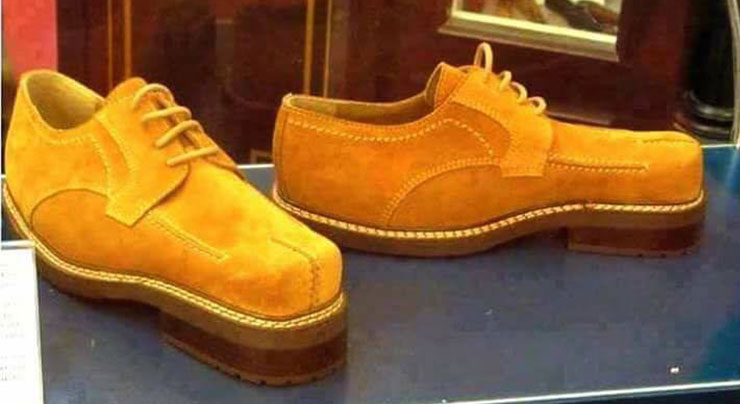
Take, for example, the legendary Selous Scouts during the Rhodesian Bush War and the unconventional warfare applied in that specific context.
The traditional olive drab combat blouse and trousers designed for fighting on the northern European plain between Russia and Germany were discarded for the more functional camouflage t-shirts, shorts, and canvas sneakers ideal for fighting in the bush.
As you can clearly see in the pics below, Selous Scouts used to wear shoes with filed-off soles (sneaker type). This ended up being extremely efficient to kind of “shuffle” their own tracks with those left by insurgents, who wore the same type of flat shoes at that time. Powerful, easy to achieve, and smart.
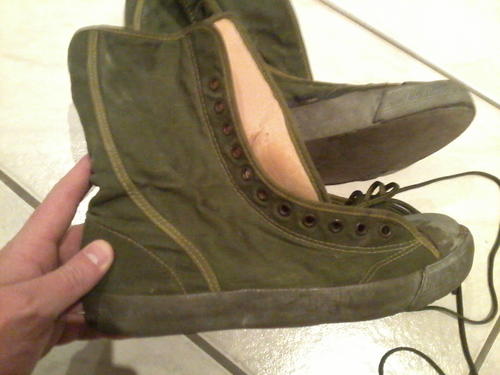
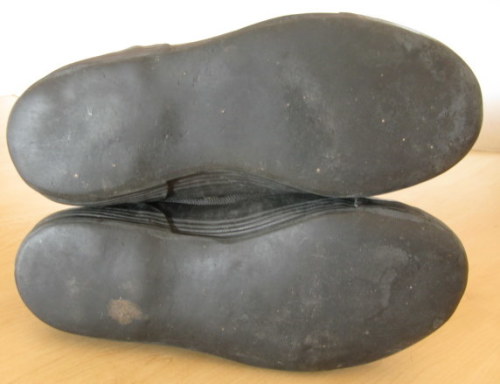
Real World Use Today
Currently, the main uses for anti-tracking shoes lies with anti-poaching strategies. Poachers, in fact, regularly take advantage of such “tools of the trade” in order to:
- place snares to trap animals,
- evade anti-poaching units,
- move through national parks or reserves in a stealthy manner, and
- conceal their own tracks once they determine they are being followed.
Are these shoes really effective? The question is a legitimate one, and to answer it you must examine the effect they produce on the ground, as each action triggers a consequential reaction. Soil makes no exceptions.
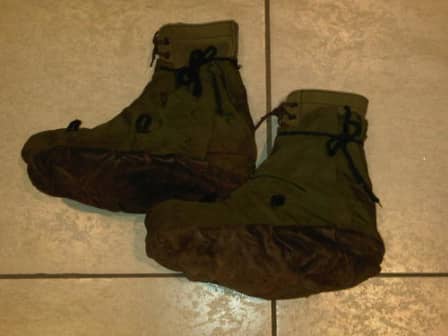
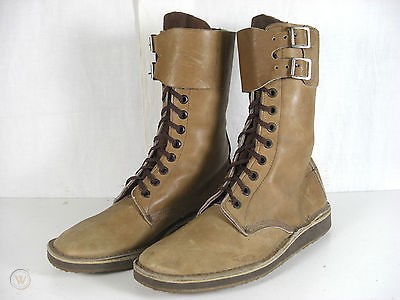
How to make Anti-Tracking Shoes
The first thing before building “stealth” shoes was to…
Considered the Environment
As mentioned before, the effectiveness of any anti-tracking shoes depends is determined by the terrain you are building them for. Each terrain requires the right soles if the goal is to leave minimal sign of your passage.
By saying this, the first thing you have to do is to scan the area you are in, to carefully observe the type of substrate you are walking in.
Is the soil dry or damp? What kind of debris is there? Is everything covered by fallen leaves? Twigs? What are their dimensions?
Ask yourself these types of questions. By doing so you are collecting data on what your antagonist might use to find and defeat you. By studying your opponent you will know what kind of anti-tracking shoes you must make.
Blended with the Ground
Before making the shoes considered the environment. Specifically, looked at:
- the forest I was operating in – mainly of oak and hazelnut trees,
- my total body weight (around 119 pounds), and
- my way of moving through the woods and, generally speaking, my way of walking.
Example:
If the soil was mainly composed of fallen branches and oak leaves due to some recent storms, grabbed some of them of proper length to cover – with abundance – my whole foot. You never want tear or cut them off, otherwise the so called “aerial spoors.” That will immediately give away your presence inside the area (to an expert eye).
By making the print of my track larger than the shoe itself you could have additional room in case everything moved a bit as I walked.
Made Them Sturdy and Effective
After careful selection of the proper branches to use, start to wrap them to the sole of my boots, with some Paracord. I just made sure not to leave any uncovered area of the paracord itself, otherwise known as “spotting.” Spotting, especially on nude terrain, the shape of a line is a mistake to avoid at any cost.
In this manner, the whole branch will adopt the form of an arch, which corresponds to the sole.
Downsides
Beyond the ease of the whole process, covering a considerable distance by wearing this sort of “natural coverage” has some downsides:
- it reduces your natural speed;
- you may lose some debris on your way;
- by losing part of the material, the paracord will pop up soon and leave distinctive signs on the terrain; and
- each change of the substrate requires a specific coverage of your sole (and, consequentially, of your pattern).
Simple as it is, you can train yourself to make better and better anti-tracking shoes, but to an expert eye, your strategy will eventually be detected. That, of course, is to an expert eye. Most people do not have an expert eye, so anti-tracking shoes will work effectively to fool 99.99% of the population.


